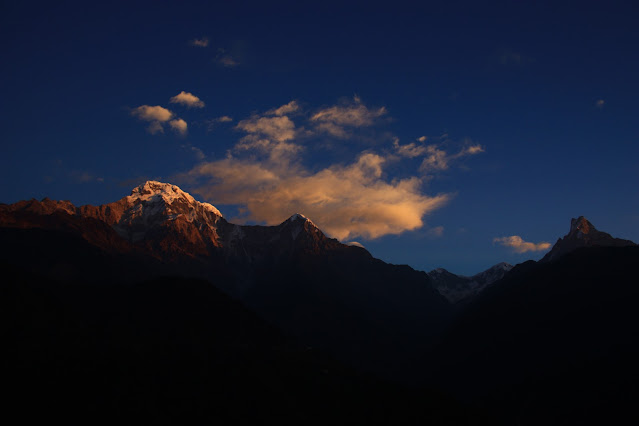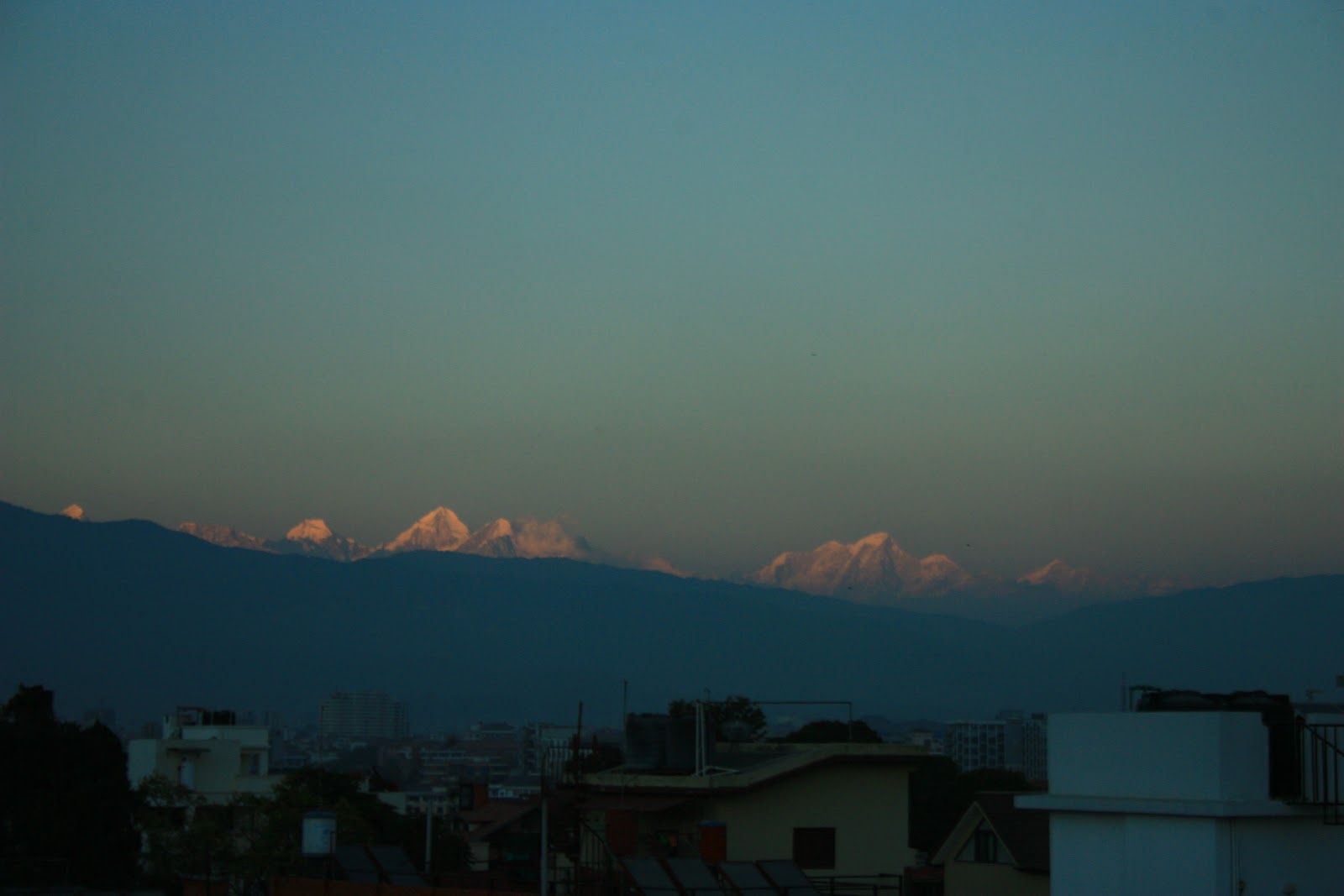... it'll hurt tomorrow.
I ran away on Friday to Pokhara, holed up in a hotel room, took a jeep to Ghandruk on Saturday, watched the NPL finals with the hotel employees, walked from Ghandruk to near Dhampus on Sunday, got lost as it was getting dark but got picked up by a bus going to Dhampus, stayed in a hotel in Dhampus shivering in the cold, then took a jeep back to Pokhara on Monday morning. I spent Monday sleeping and reading and finally buying a warm jacket -- something that would have really helped me in Ghandruk and Dhampus. I'm back in Sanepa now, and posting this between reading short stories written by high school kids.
Here are some customary Fewa photos:
This, of a man by the lake, is meh.This, with Taal Barahi in the background, is also okay only.
But this is the Pokhara Lakeside photo, isn't it? :)
This looks good enough to edit the RAW file and print :)
Now follow photos from Ghandruk, of the sunrise.
And these are from Landruk, where, a dude told me I was 20 minutes away from the road. I didn't want to keep climbing the stone steps, and I had stupidly missed the road right by the bridge over Modi khola. I can keep a steady pace on a mountain road, needing to rest only every hour or so. But with stone steps I was having to stop every minute or so -- not for rest because my limbs were tired, but because I was out of breath. I didn't have enough muscles and mitochondria, I think.
The road passed right behind the dude's house. He a dumdum.
And from the road:
I had to eat an hour or so after Landruk, so asked an old lady if she would cook me up one Wai-Wai with two eggs. As I was leaving, I asked how much I owed her. The answer was brilliant.
'I don't know,' she said, 'I wonder how much babu will give aama.'
What's a babu to do under such a circumstance? I asked her how much she thought babu would give her. She said, '300 rupees.'
The jeep track to Ghandruk has led to a glut of new hotels there. But across the Modi, in Landruk and other villages along the trail, business has dried out horribly. So many shops unattended, hotels shut or shutting down.
The most frequent topic of conversation was motor accidents and young men being maimed or killed. Another involved which country the sons were in -- Malta and Portugal, oftentimes.
Significant stretches of the new motor roads are being laid down in reinforced concrete. This is preferred by local governments -- there is the perception that this will give longer-lasting roads. I am skeptical. I think the absence of drainage channels along the roads will lead to landslips. I think this method is preferred because local contractors can be given the gig rather than having to recruit the help of larger construction firms that own equipment needed to build roads.
I also heard of a new drink which the locals in the jeep from Dhampus to Pokhara were calling something like 'bataari' -- which I'm not sure if it is a caffeinated energy drink or very strong liquor. Apparently it comes in a small bottle, costs rs 50, and is a favorite of manual laborers. Disparagingly, the locals talked of 'Salyanis' -- not from the Salyan district further to the west, but, I suspect, from the neighboring mountain of Salyan. Apparently it is also given to mules to push them past fatigue.

















































